Climate impacts changing community lives and livelihoods - Dominica’s Petite Soufrière experience
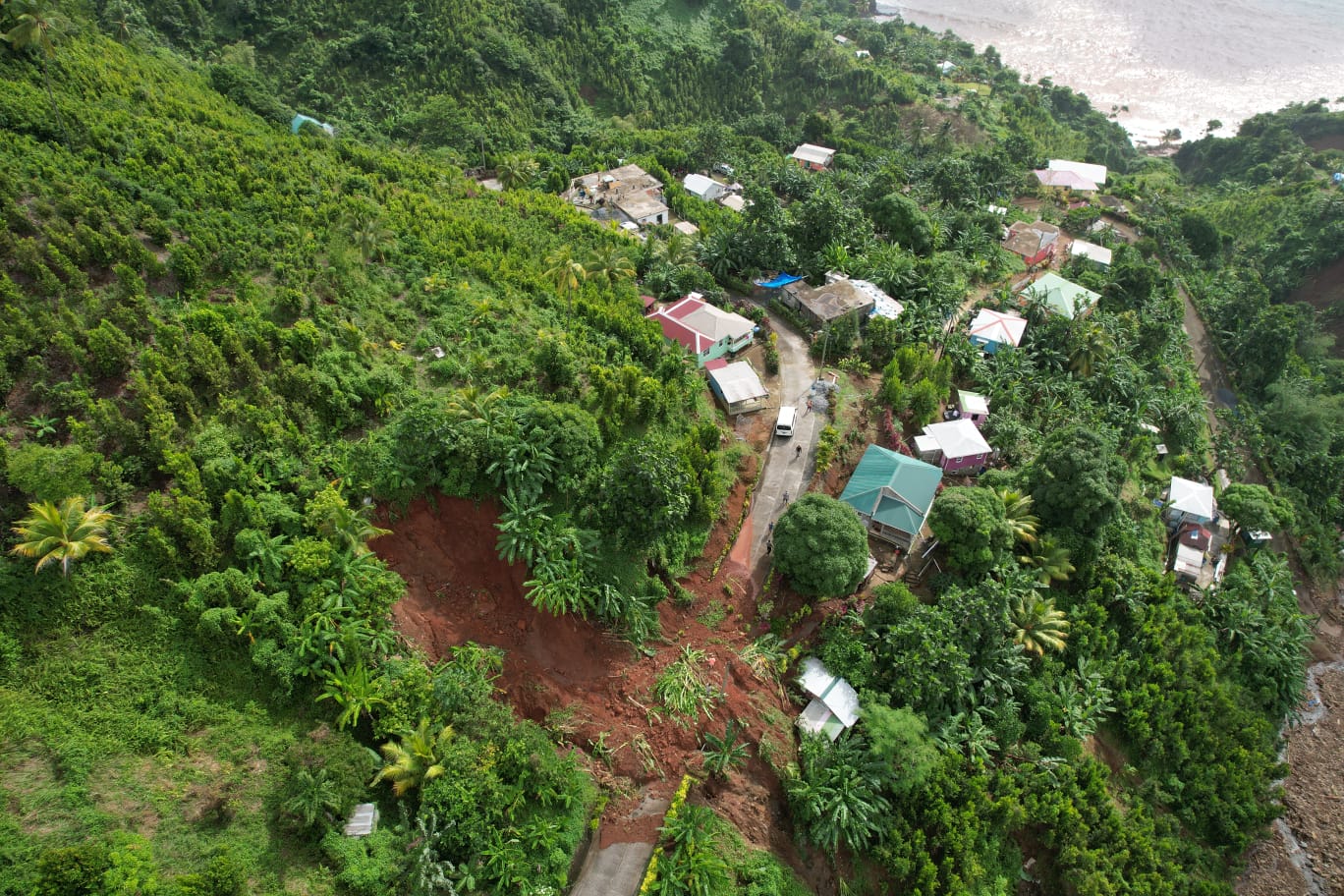
Caribbean people are used to May to October as the wet season. Things change! For 2022, October rains flowed into November, perhaps the wettest November in recent memory. During the first November weekend, torrential rains and subsequent landslides ravaged hillsides in Petite Soufrière (PS), a community on Dominica’s east coast. Amos Benjamin, a secondary school teacher, and Troy Shillingford were on hand to capture aerial views of the devastation. Both were newly-trained as drone pilots under the IICA-CBF EbA Project. Benjamin shares his experiences, which many residents in several rural communities across the Caribbean can relate to, living with the real, not projected impacts of climate change.
‘You know when something is happening to someone else, and you’re looking at it on a television show or a movie, or on the news and you say, “Boy, these things really happening?” And then it happens to you, and then you realize the actual situation you are left in,’ reflected Benjamin on the aftermath of Hurricane Maria (2017). ‘That is the impact we had, and that is what really brought me to my senses. In terms of climate change, I would say. That was one of the wake-up calls for all of us.’
Having a keen interest in global affairs and current events, Benjamin has a general awareness of climate change issues. However, after Tropical Storm Erika in 2015, it became clear that these devastating events were actually hitting home, more than before. He recalled the massive mudslides in the Petit Savanne community, which claimed 30-something lives; almost 15 of them, Benjamin reflects sombrely, were close friends. ‘A lot of persons had to be running for their lives, and literally seeing people you know getting covered in slides right in front of them. I heard so many stories, and to me, it was so surreal.’
|
‘…We had no food available, because the storm [Hurricane Maria] destroyed as much as 95% of all trees and the crops; everything we had was destroyed almost totally, even our shelter… the storm was able to rip-off all roofs.’ |
Picking up the story at the next major point of disaster, Benjamin noted that ‘just as things were starting to settle in, we encountered Hurricane Maria. ‘Our access roads were blocked by slides, leaving us stranded in the community. There was no electricity for over a year; we had no phone service, no means of income - well money didn't really matter during that time, because we couldn't even buy anything. We had no food available, because the storm destroyed as much as 95% of all trees and the crops; everything we had was destroyed almost totally, even our shelter… the storm was able to rip-off all roofs.’
|
‘…because of climate change in our community, we don’t get to bounce back as we were maybe 10, 15 years ago.’ |
Benjamin says that the community of PS had finally started feeling more settled again, with some people also finally finishing their rebuilding and repairs after Maria. However, with November’s early rains, and the resulting landslides, their community was cut-off, again, from the rest of the island; no electricity for two weeks; still awaiting a restored water supply. ‘It’s just becoming such a burden on us in the community,’ Benjamin laments, ‘because of climate change in our community, we don’t get to bounce back as we were maybe 10, 15 years ago. Every time we start building back, something else occurs, and it brings us back to a position, where we are wondering, “are we really willing to go forward again, or are we just going to settle for that, and maybe move on or move forward with our lives”?’
‘I would always think of PS as maybe one of the safest places to be at any point in time.’ He recalls the Petite Soufriere of his childhood with fondness: enjoying walking from PS to San Sauveur for school on mornings, and then back again in the afternoons, daily river or sea baths, hunting for fruits all around. He reminisces about the simple life they once enjoyed in the community, engaged in gardening, rearing animals, fishing, or processing bay oil for sale to the cooperatives.
|
‘As time passed … areas that were considered safe before, are now considered unsafe … More than half of the population (of PS) have already migrated as a result’ |
‘The community has changed so drastically,’ he relates. ‘As time passed, those same areas that were considered safe before, are now considered unsafe; persons built in areas, and then all of a sudden, massive landslides would go with maybe half their land … More than half of the population (of PS) have already migrated as a result; a lot of people were relocated to different areas.’ Reflecting on the government’s proposal of relocation for the community of PS, as was done with the Petit Savanne community a few years ago, Benjamin says, ‘Maybe if you were to visit PS, in next 5 to 10 years, if the government keeps up with that promise, you may not even meet a community called PS in that area any more… the community may become history!’
Climate change impacts are threatening vulnerable areas with a ‘back to nature’ outcome, but definitely a very different and more inhospitable nature for humans and community lives and livelihoods.
|
‘we now have to look for alternative ways of maybe building, redesigning communities, or getting something that is really going to work for us.’ |
‘If I were to sum up this current (EbA) project, I would say that it is necessary for us as a community. One of the key aims is it educates us as to what is going on. In our community, a lot of persons feel like this is happening to them now, they feel like they don’t really know what to do. So, one way is that when persons are educated, it helps them to understand what is happening, like why is this happening; and it changes our perspective as to how we can really do better the next time.’ On possible pathways forward, Benjamin strongly feels that ‘we now have to look for alternative ways of maybe building, redesigning communities, or getting something that is really going to work for us.’
|
‘Having the drone, we are able to not only to better assess the damage, but it reduced the risk involved in moving around.’ |
Flying the drone after the recent landslide event in his community, Benjamin says that the technology gave them access and a vantage point they did not have on foot and helped them to immediately assess the damage: ‘What would maybe take me hours to walk around the community, took the drone maybe 10 minutes to see everything. And so, it makes it easier to assess the damage to see how big the slide was; what was the damage like; did anyone get hurt or stuck in the slide… Having the drone, we are able to not only to better assess the damage, but it reduced the risk involved in moving around.’

|
‘[with drone technology] …we can make better decisions as to how we build, and how we cut roads, where we cut drains, where we send water to prevent future events’ |
Benjamin believes that access to drone technology definitely helps them to understand impacts, and provides new information that can be used for making more informed decisions, including areas for building. In one area impacted by landslides, Benjamin observed that ‘… after looking at it from the air, you could actually see that the damage was caused by some of the drainage going in the wrong areas. So those drains carried a lot of water from other places, and brought it to unsafe zones that would have caused landslides… you could actually see where the water was coming out, where the slides started and where they ended… Maybe in the future, if we were to make another choice, having those pictures, we would actually be able to tell and say, ok, this place is not safe at all, whereas, these areas might be safer, and so, we can make better decisions as to how we build, and how we cut roads, where we cut drains, where we send water to prevent future events.’
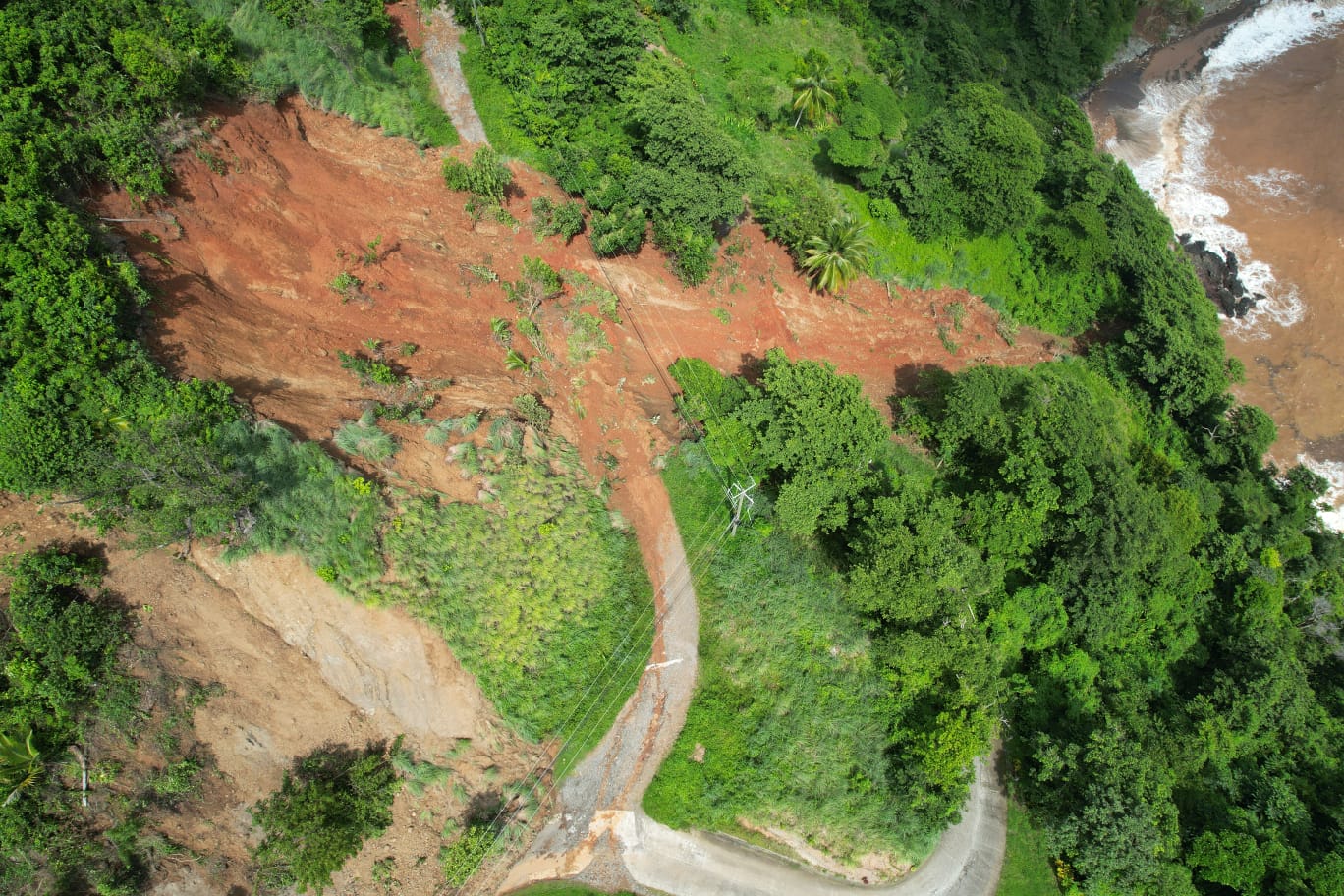
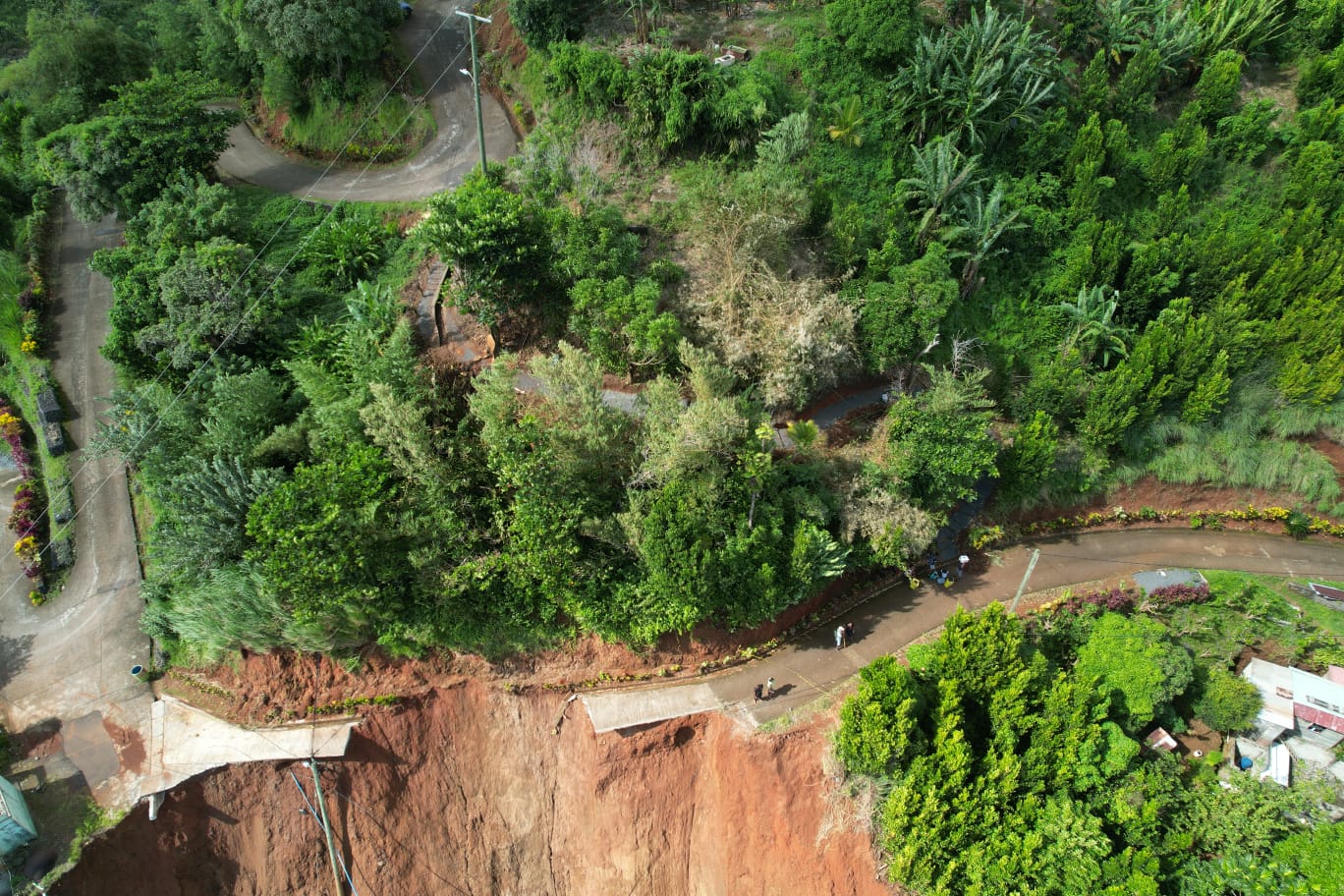
|
‘… at least one outcome [of IICA-CBF EbA project] is that [people] can also become more proactive as a community; that the community: can build on what they have learned’ |
Benjamin was also tasked as an enumerator for a socio-economic survey undertaken as part of the IICA-CBF EbA project. When asked about any takeaways from the responses received from community members, he said: ‘I would say everyone at one point or the other, had been impacted by landslides’, even if they did not directly associate them with climate change. ‘Most persons felt that weather conditions were one of the main threats to the community’. Based on this experience, … ‘reaching out to people, even as they are answering, they are not even aware of the actual impact that climate change is having on them, until they give the responses. And you hear certain stories about them losing so much, or having to restart or to do certain things to survive. This is something that I have come to realise that persons are affected, but they're not really aware of the impact, on their income, or on the losses they experienced. They would not even have a figure. So, they would not even know, “Hey, I lost; the value of my loss was maybe 5,000 dollars, or maybe 15,000”.’
As the IICA-CBF EbA project approaches a close during the first half of 2023, Benjamin hopes that if at least one outcome, is that they can also become more proactive as a community; that the community: ‘can build on what they have learned; They can really take that information and help to put a plan in place for the community; We can also use the info gathered to source the necessary funds to take up major projects within the community to help build safer and more resilient; Also, people would have a better knowledge as to where to build, how to build and so on. Certain mistakes that persons make, cost them so much. I hope we as a community will have better foresight of those mistakes so they don't do them in the future.’
About EbA Project
The Ecosystem-based Adaptation (EbA) Project, “Strengthening Coastal and Marine Climate Resilience through Upland and Coastal Ecosystem Based Adaptation and Community Engagement,” is funded by the Caribbean Biodiversity Fund (CBF) EbA Facility, and supported by the Government of Germany through the German Development Bank (KfW) with resources from the International Climate Initiative (IKI) of the German Ministry of the Environment, Nature Conservation and Nuclear Safety. The project is being implemented by the Inter-American Institute for Cooperation on Agriculture (IICA), along with partners IAMovement, and the University of Florida, as well as community-based organizations in the four participating countries: Gilbert Agricultural and Rural Development Center (A&B), Petit Soufrière San Sauveur Village Council (DOM), Canaries Community Improvement Foundation (SLU)
About IICA
IICA is the specialized agency for agriculture in the Inter-American system, with a mission to encourage, promote and support its 34 Member States in their efforts to achieve agricultural development and rural well-being through international technical cooperation of excellence.
More information:
EbA Project Management Unit at eba-iica@iica.int
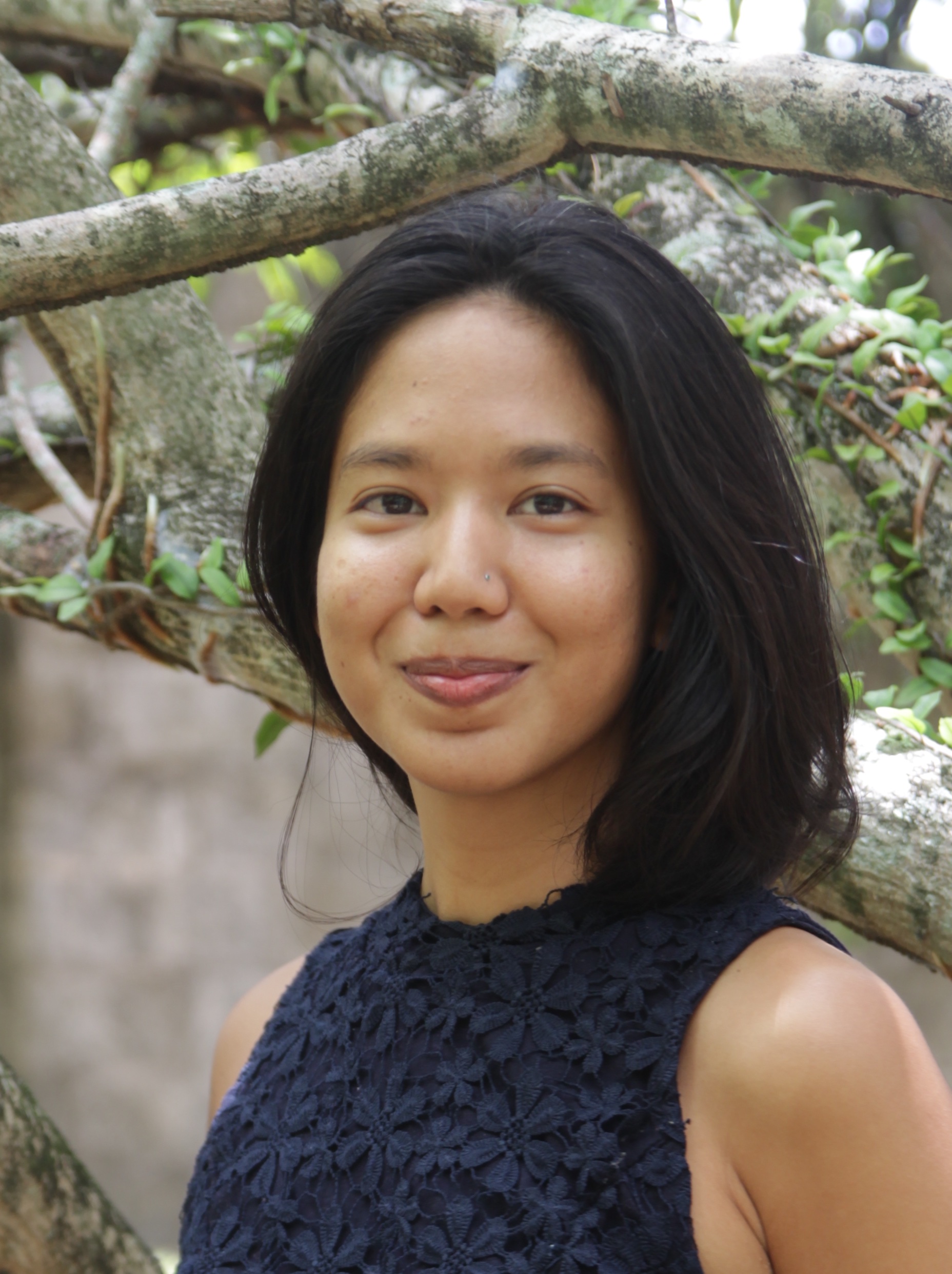 Rhonda Chan Soo is a Trinidadian documentary filmmaker and non-fiction multimedia storyteller developing a body of work dealing with contemporary issues of Caribbean identity. She earned an MA in documentary filmmaking from Wake Forest University and a BSc in Environmental Science from Furman University, and worked as a multimedia fellow with the Southern Environmental Law Center in Birmingham, Alabama in 2013 before returning home to Trinidad. Rhonda has been the Managing Director of Bird’s Eye View Productions since 2018. Her work is informed by empathy, a desire for justice and equality, and a critical practice that acknowledges her own positionality as a POC woman from the Global South. In her upcoming works, Rhonda aims to explore collective memory, identity and culture. Visit www.birdseyeviewtt.com to learn more about Rhonda’s work.
Rhonda Chan Soo is a Trinidadian documentary filmmaker and non-fiction multimedia storyteller developing a body of work dealing with contemporary issues of Caribbean identity. She earned an MA in documentary filmmaking from Wake Forest University and a BSc in Environmental Science from Furman University, and worked as a multimedia fellow with the Southern Environmental Law Center in Birmingham, Alabama in 2013 before returning home to Trinidad. Rhonda has been the Managing Director of Bird’s Eye View Productions since 2018. Her work is informed by empathy, a desire for justice and equality, and a critical practice that acknowledges her own positionality as a POC woman from the Global South. In her upcoming works, Rhonda aims to explore collective memory, identity and culture. Visit www.birdseyeviewtt.com to learn more about Rhonda’s work.
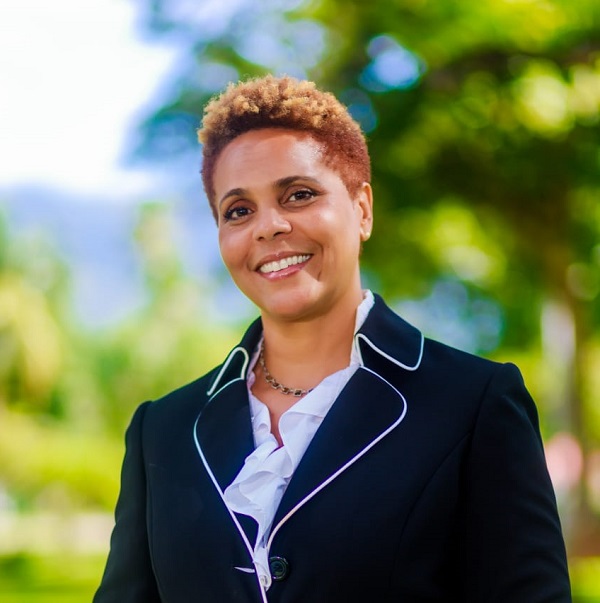 Diana Francis is a graduate of the University of the West Indies (UWI), St. Augustine – BSc. Economics (1986-1989) and Cave Hill - MPhil Economics (1993-1996). She has been working in agricultural and rural development, providing policy and trade support since 1989, at the national level through the Ministry of Agriculture in Dominica, and from 1993, at the regional level, with the Inter-American Institute for Cooperation on Agriculture (IICA). She has provided direct support to CARCOM and the OECS Secretariat, and individual Ministries of Agriculture, in formulating Agricultural Policy and Strategy, emphasizing the importance of rebuilding strong planning capacity for effective policy implementation. She has authored/co-authored a number of publications and written pieces on a range of topics in agricultural development as well as develop and manage implementation of externally funded regional projects. As the current IICA Representative in Trinidad and Tobago (from July 2019), she manages IICA’s technical cooperation activity in collaboration with a number of strategic partners in areas related to climate resilience, agricultural health and food safety, community-based agriculture and rural development, food and nutrition and importantly, providing coordinated and holistic development support to micro and small agro-processors.
Diana Francis is a graduate of the University of the West Indies (UWI), St. Augustine – BSc. Economics (1986-1989) and Cave Hill - MPhil Economics (1993-1996). She has been working in agricultural and rural development, providing policy and trade support since 1989, at the national level through the Ministry of Agriculture in Dominica, and from 1993, at the regional level, with the Inter-American Institute for Cooperation on Agriculture (IICA). She has provided direct support to CARCOM and the OECS Secretariat, and individual Ministries of Agriculture, in formulating Agricultural Policy and Strategy, emphasizing the importance of rebuilding strong planning capacity for effective policy implementation. She has authored/co-authored a number of publications and written pieces on a range of topics in agricultural development as well as develop and manage implementation of externally funded regional projects. As the current IICA Representative in Trinidad and Tobago (from July 2019), she manages IICA’s technical cooperation activity in collaboration with a number of strategic partners in areas related to climate resilience, agricultural health and food safety, community-based agriculture and rural development, food and nutrition and importantly, providing coordinated and holistic development support to micro and small agro-processors.
Note: The opinions expressed in this article are the responsibility of the authors and do not necessarily reflect the opinion of IICA.
|
If you have questions or suggestions for improving the BlogIICA, please write to the editor: Joaquín Arias |
Añadir nuevo comentario